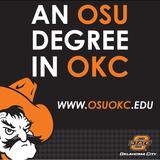- The mission of RCC is to prepare students for lifelong learning in a high technology, fast-paced environment. By investing in a technology infrastructure, professional development of employees, and a flexible curriculum, Redlands Community College will prepare students for the 21st century.
School Highlights
Redlands Community College serves 2,183 students (28% of students are full-time).
The college's student:teacher ratio of 15:1 is lower than the state community college average of 18:1.
Minority enrollment is 33% of the student body (majority Hispanic), which is less than the state average of 56%.
Quick Stats (2025)
- Enrollment: 2,183 students
- In-state tuition: $3,701
- Out-state tuition: $5,951
- Student:teacher ratio: 15:1
- Minority enrollment: 33%
- Source: Integrated Postsecondary Education Data System (IPEDS)
Top Rankings
Redlands Community College ranks among the top 20% of public schools in Oklahoma for:
Category
Attribute
Debt For Students
School Overview
The teacher population of 145 teachers has stayed relatively flat over five years.
Redlands Community College
(OK) Community College Avg.
Carnegie Classification
Associate's Colleges: High Transfer-High Nontraditional
Baccalaureate/Associate's Colleges: Mixed Baccalaureate/Associate's
Institution Level
At least 2 but less than 4 years
At least 2 but less than 4 years
Institution Control
Public
Public
Total Faculty
145 staff
154 staff
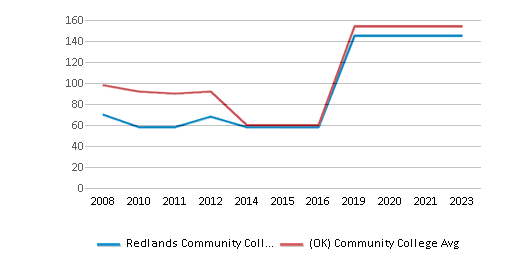
School Calendar
Student Body
The student population of Redlands Community College has grown by 14% over five years.
The student:teacher ratio of 15:1 has increased from 13:1 over five years.
The Redlands Community College diversity score of 0.52 is less than the state average of 0.76. The school's diversity has stayed relatively flat over five years.
Total Enrollment
2,183 students
1,473 students
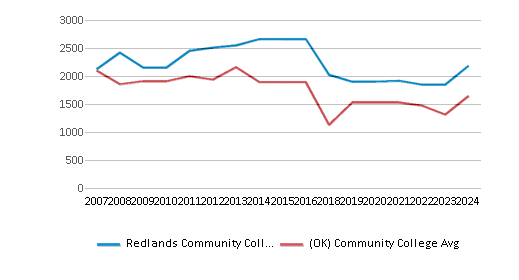
Student : Teacher Ratio
15:1
18:1
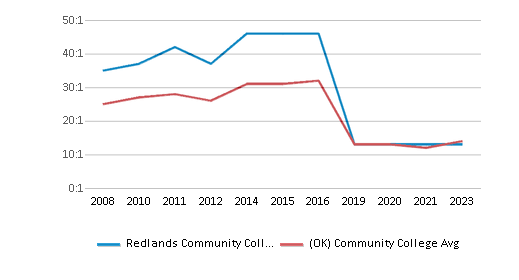
# Full-Time Students
610 students
663 students
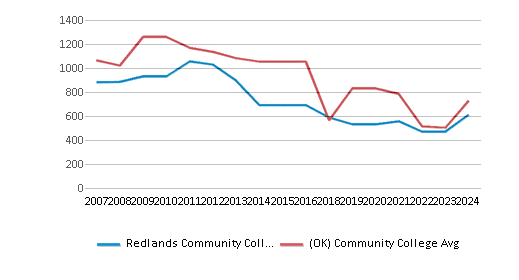
# Part-Time Students
1,573 students
1,058 students
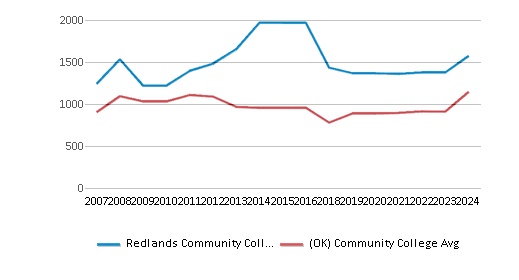
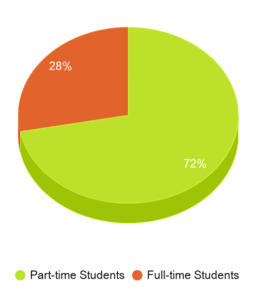
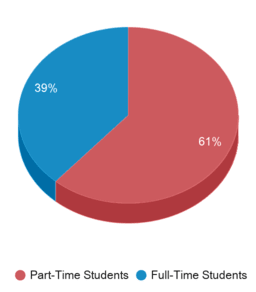
# Enrollment Undergraduate
218 students
236 students
# Full-Time Undergraduate Students
610 students
610 students
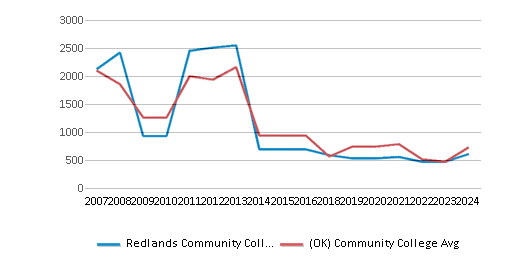
# Full-Time Graduate Students
n/a
5 students
# Part-Time Undergraduate Students
1,573 students
972 students
# Part-Time Graduate Students
n/a
14 students
Total Dormitory Capacity
240 students
300 students
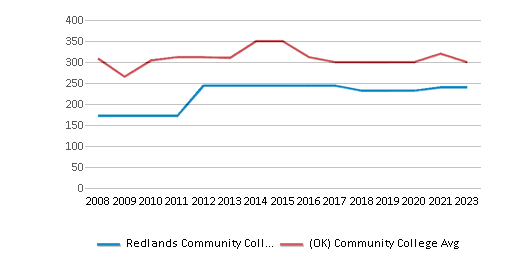
% American Indian/Alaskan
7%
8%
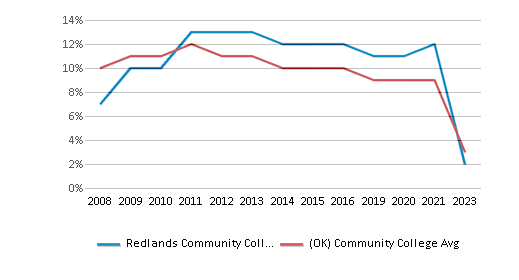
% Asian
1%
4%
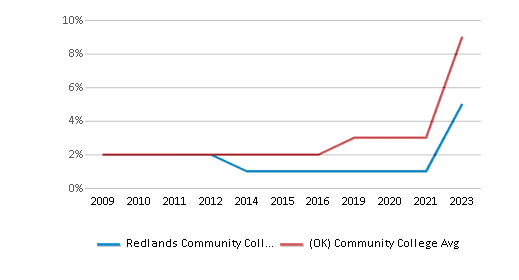
% Hispanic
12%
11%
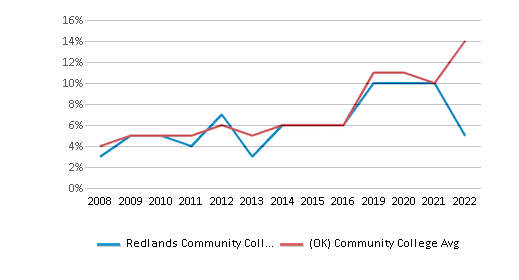
% Black
3%
10%
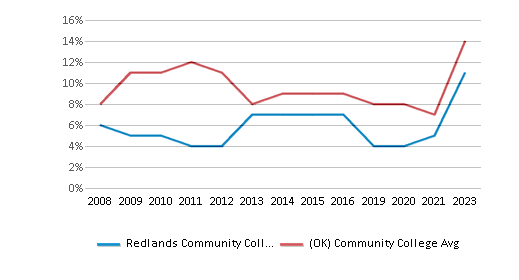
% White
67%
44%
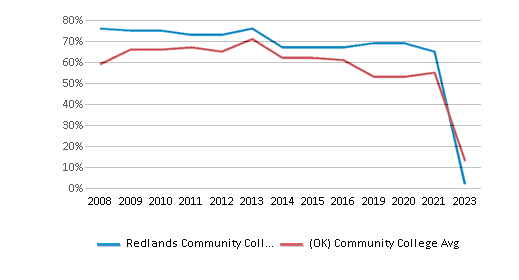
% Hawaiian
n/a
8%
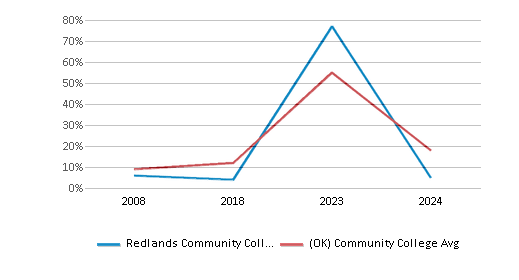
% Two or more races
8%
10%
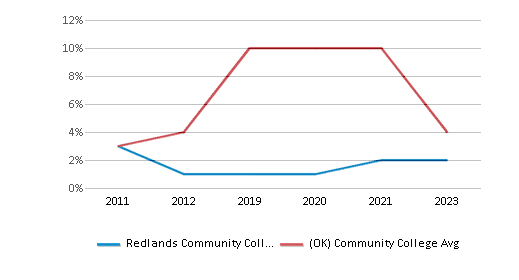
% Non Resident races
n/a
1%
% Unknown races
2%
4%
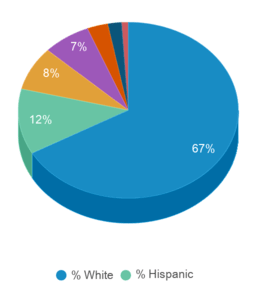

Diversity Score
0.52
0.76
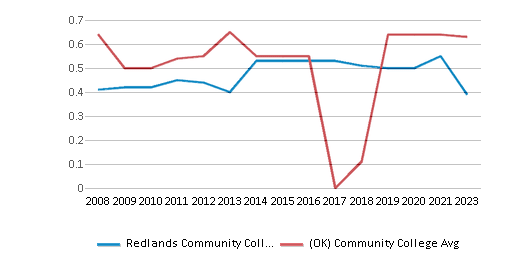
College Completion Rate (Students who graduate in less than 4 years)
0.3919%
0.5629%
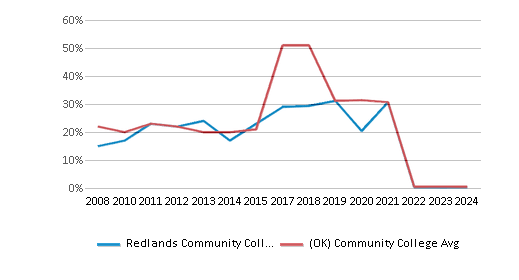
College Completion Rate (Students who graduate in 4 years or more than 4 years)
n/a
0.1525%
Average Graduate Earnings (10 Years)
$37,200
$34,700
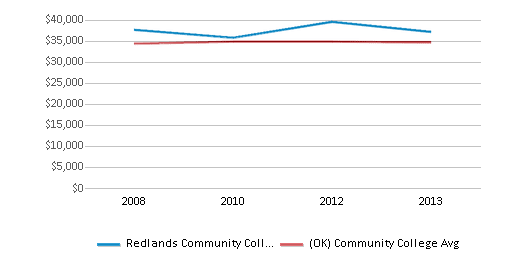
Tuition and Acceptance Rate
The public in-state tuition of $3,701 is more than the state average of $3,475. The in-state tuition has declined by 30% over four years.
The public out-state tuition of $5,951 is less than the state average of $7,963. The out-state tuition has declined by 24% over four years.
In-State Tuition Fees
$3,701
$3,475
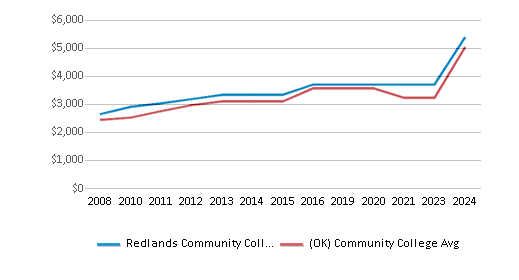
Out-State Tuition Fees
$5,951
$7,963
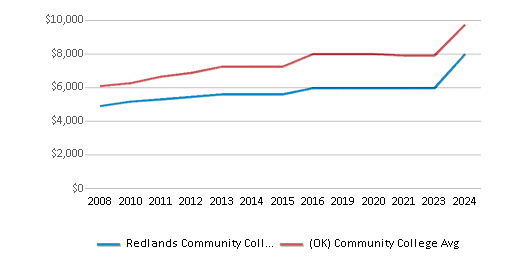
% Students Receiving Some Financial Aid
81%
88%
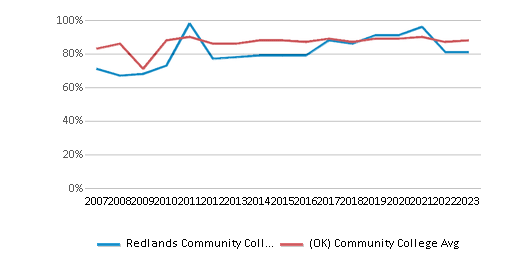
Median Debt for Graduates
$8,750
$12,000
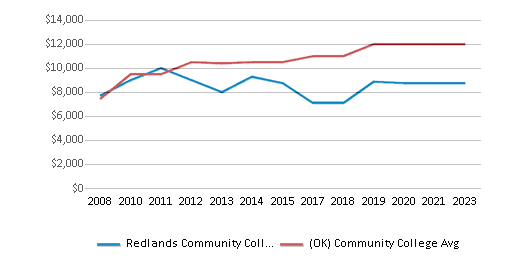
Median Debt for Dropouts
$4,500
$5,889
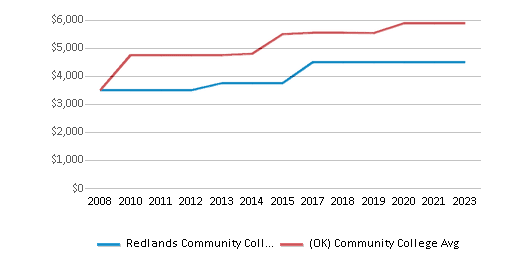
Acceptance Rate
n/a
55%
SAT Reading
n/a
387
SAT Math
n/a
475
ACT Composite
n/a
18
ACT English
n/a
17
ACT Math
n/a
18
Source: 2024 (or latest year available) Integrated Postsecondary Education Data System (IPEDS)
School Notes
- The main campus encompasses 55 acres and includes seven buildings geared toward learning for the mind and body. An additional 150 acres houses the equine and Darlington agricultural centers. In addition to modern classrooms and media services, RCC facilities include an Art Gallery, Culture Center, Conference Center, seven computer labs with Internet I & II technology, the Darlington Agriculture Education and Research Center, the Equine Center, a Super Circuit Center, a swimming pool and sauna. Complete an associate's degree in general studies in one year through our Fastrack program by earning credits in day, evening and on-line courses. Earn an associate's degree in one of over 60 programs including specialties such as Agriculture, Athletic Fitness Trainer, Early Childhood Development, Emergency Medical Technology, Forensic Computer Science, Information Technology, International Business, Nursing and Pre-Criminal Justice. Life outside the classroom is enhanced by a variety of activities including clubs such as Student Senate, Aggie Club, Phi Theta Kappa, Native American Club, Student Nurses' Association, Black Culture Organization, Future Business Leaders and Fellowship of Christian Athletes. RCC students also enjoy intramural sports like basketball, sand volleyball and flag football. Redlands currently holds the maximum ten year accreditation from the Higher Learning Commission of the North Central Association of Colleges and Schools.
Frequently Asked Questions
How much does Redlands Community College cost?
Redlands Community College's tuition is approximately $3,701 for In-State students and $5,951 for Out-State students.
What is Redlands Community College's ranking?
Redlands Community College ranks among the top 20% of community college in Oklahoma for: Least debt for graduating students.
Recent Articles

Obtaining Your Bachelor's Degree at a Community College
Explore the evolving landscape of community colleges offering bachelor's degrees, addressing affordability, accessibility, and workforce needs.

A to Z of Community College Certificates and Courses
From business and healthcare to technology and skilled trades, the article showcases the breadth of options available to students seeking to enhance their knowledge, develop new skills, or pursue career advancement.

What is a Community College?
This comprehensive guide explains what a community college is, its history, and its role in higher education. It covers the types of programs offered, differences from four-year colleges, benefits of attending, and important considerations for prospective students, providing valuable insights for those exploring educational options.

